The ABC’s of Torque Hinges
Posted On Apr 10th 2022
Posted On Apr 10th 2022
Posted On Apr 10th 2022
At Sugatsune America we make a wide selection of non-adjustable and adjustable friction hinges, also called torque hinges. Here’s what you need to know about the technology behind these hinges, how hinges work in different applications, and how to choose the right hinges for your project.
You can find more guides and other helpful articles right here on the Sugatsune Hardware Blog, where we look at the hardware that powers projects across America.
A torque hinge, also known as a friction or position control hinge, is a hinge designed to provide resistance to the pivoting motion of the hinge itself. This is achieved by a mechanism within the hinge that generates friction to provide resistance, which prevents a component from moving unwantedly. This makes them great when you want to hold lids, doors, panels, or display devices in a desired position for safety and convenience.
At Sugatsune, many of these hinges are available in adjustable torque versions. Adjustable friction hinges let you control how much force it takes to overcome the position control.
When it comes to understanding how hinges work usefully in this way, a common example would be the hinges used on most laptops. The display stays shut until the user opens it and remains in the position the user leaves it in.
Torque hinges are also designed to provide smooth and seamless operation throughout their opening range so a user does not have to jerk or pull on a flap to get it open—a key feature of how hinges work so smoothly. They also prevent spring back making it hard to slam something shut, therefore, reducing the risk of equipment damage or worse, injuries to the user.
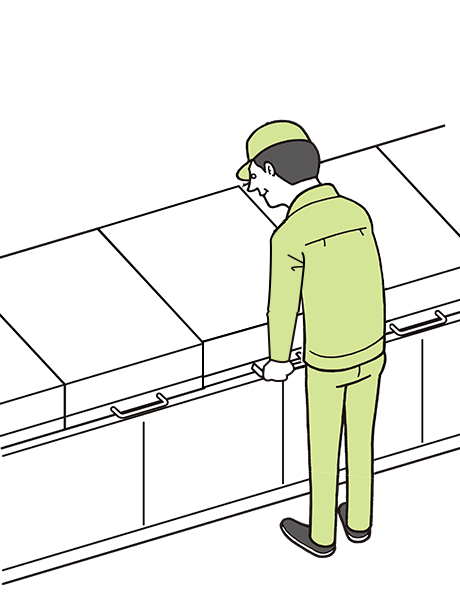

 Efficiency
A door or panel on torque hinges stops at any angle you desire, without the use of a stopper.
Efficiency
A door or panel on torque hinges stops at any angle you desire, without the use of a stopper.
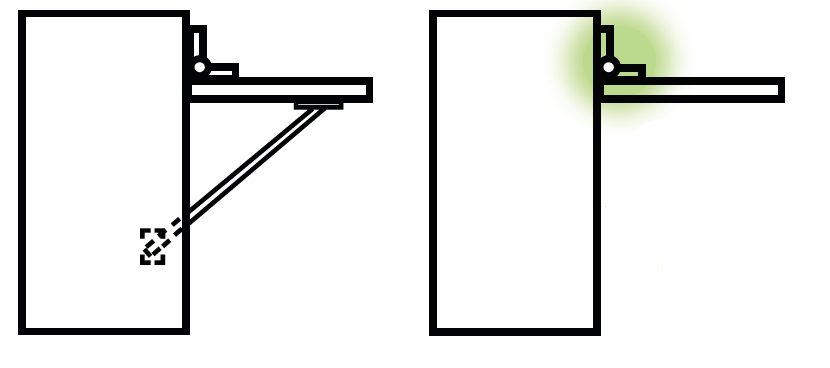
Clean Design Lid supports for the door or panel are not needed, as the hinges themselves bear the load, thereby allowing maximum space inside the application.
 Safety
Torque hinges prevent unwanted movement, hence providing additional safety for users.
Safety
Torque hinges prevent unwanted movement, hence providing additional safety for users.
What holds torque hinges in place? This is the “magic” part of how hinges work.
The structure of the torque hinge shaft uses friction. When the door, panel, or flap is opened or closed, the motion—the rotational force of the object—generates friction, activating the free-stop mechanism. With adjustable friction hinges, this rotational force can be set to your needs within a predetermined range.
There are 3 basic types of mechanisms that can be used to create the friction in the hinge; a curl type, disk type, and pipe type. A more complex type (not referenced ) is an Omega clip type.
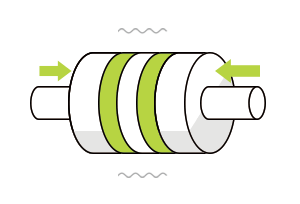
Disc structure Shifting discs sandwiching a fixed disc are moved.
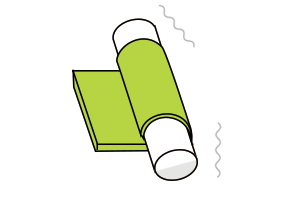
Curl structure A shaft inside a rolled spring sheet is rotated.
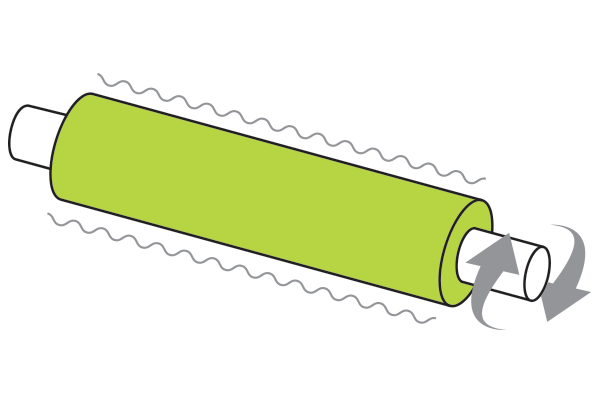
Pipe structure A shaft press-fitted into a plastic pipe is rotated.
In all cases, the result is the same, and this is the essence of how hinges work: The friction inside the torque hinge holds the lid in any position, and, when the frictional force is overcome by the user pushing or pulling on the door or panel, the movement is smooth and predictable.
For Sugatsune’s adjustable friction hinges, the torque adjustment is usually as simple as turning a single screw with a hex key.
Additionally, some torque hinges use exclusively solid materials, while others use a mixture of solid materials and fluids—often high-viscosity oil.
The use of fluids provides excellent friction for minimal wear and tear, which is another important consideration in how hinges work with torque. At Sugatsune, durability is one of our top engineering priorities.
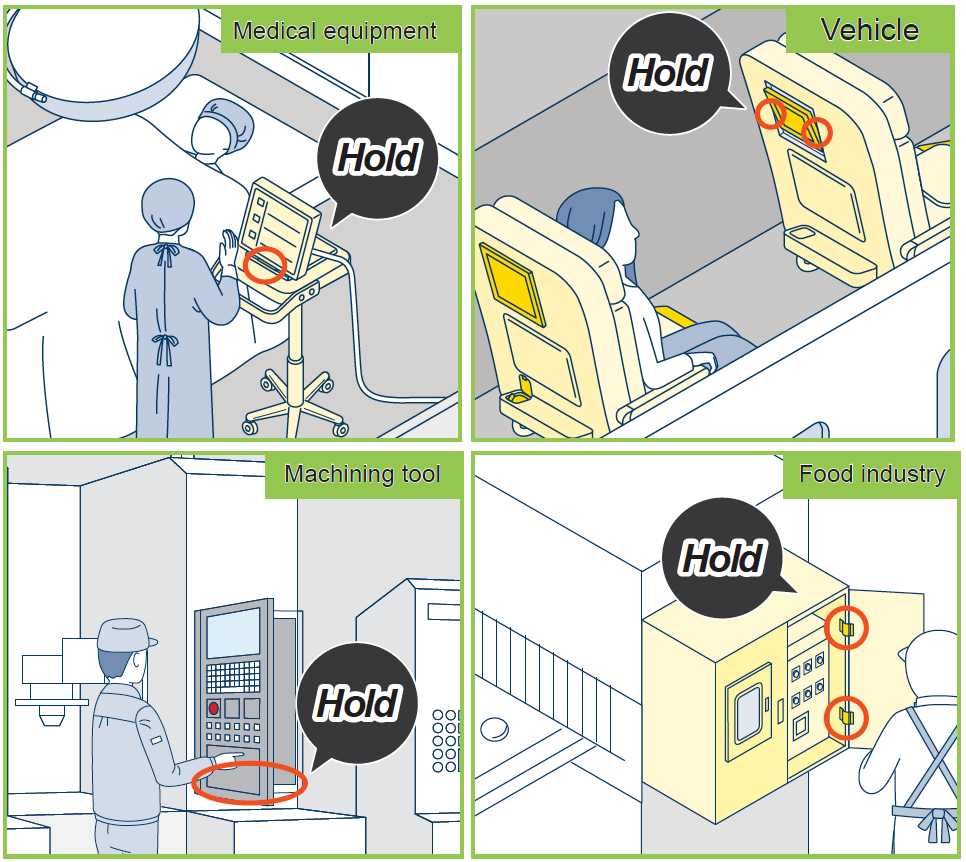
Torque hinges are suitable for doors, lids, or access panels on machinery, display monitors, lighting, cabinets, display cases, retractable countertops, and much more.
Torque hinges are available in a variety of torque strengths, specifications, mounting positions, and features. This depth of variety makes them functional for all types of applications. Fully adjustable friction hinges add further use cases as well as great convenience.
When you’re thinking about how hinges work to improve a workplace ergonomically and with regards to safety, simply imagine the many scenarios where a regular i.e. “dumb” hinge can cause trouble: doors slamming, panels falling or swinging freely, etc
To choose the best hinge for your application, you must consider:
You must also identify any environmental factors like heat or moisture that could affect the hinges’ performance. (The answer to how hinges work when they’re rusted away is: “They don’t.”)
And, of course, the aesthetic design is also important to ensure the right look of your application.
At Sugatsune, all of our hinges are designed with a clean, minimalist style, often with different color options—making them suitable for inclusion in almost any style of decor.
As for corrosion resistance and tolerance for heat, most of our hinges feature stainless steel construction which performs excellently on both counts. Good materials are key to how hinges work sustainably in harsh environments.
A critical step in selecting the correct torque hinge for your project is finding a hinge that has the strength to support the door, panel, or other objects it will facilitate. “Torque” in this case is the force that will be put on the friction mechanism, and the hinge’s specification needs to match or better yet exceed the actual torque that the object will exert on the hinge. That’s how hinges work: Their resistive torque has to be stronger than the torque coming from the object.
Torque hinges should list their maximum rated torque value in their spec sheet. In order for these hinges to function properly and avoid damage, you must make sure that the object mounted onto the hinges will exert no more than this amount of torque.
Be sure to check the torque capacity based on the total number of hinges to be used. Because of how hinges work, adding more hinges will decrease the load on each individual hinge, allowing you to mount heavier doors, panels, etc.
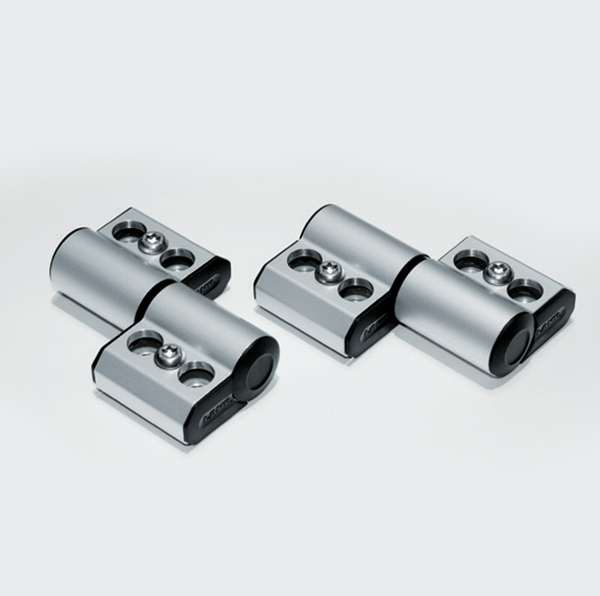
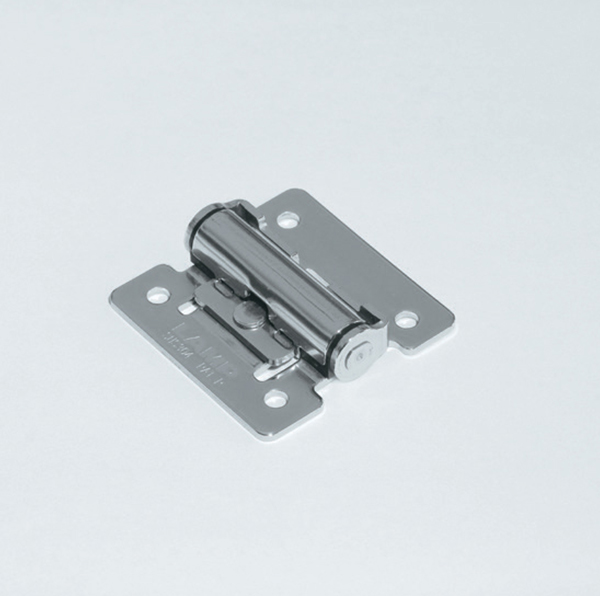 Butt Hinges
This is a common design for swinging doors.
Butt Hinges
This is a common design for swinging doors.
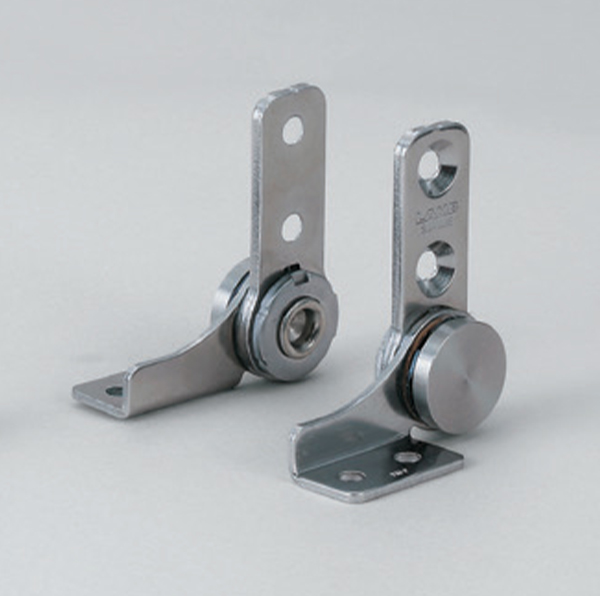
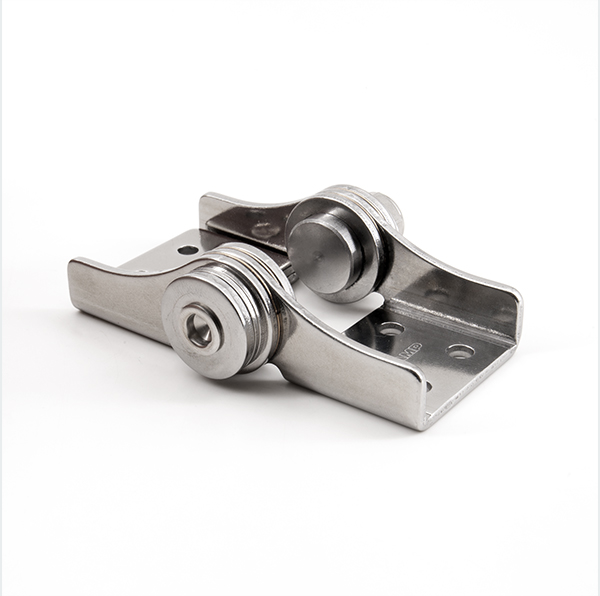 Standard Torque Hinges
This simple design permits various mounting positions for upward-opening lids.
Standard Torque Hinges
This simple design permits various mounting positions for upward-opening lids.
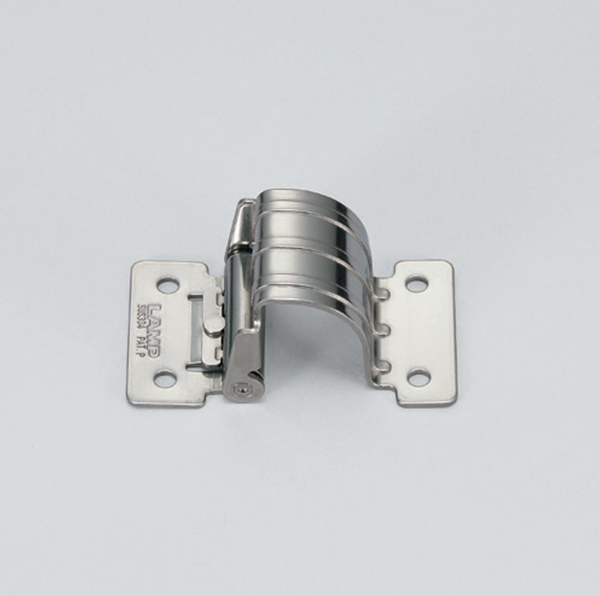
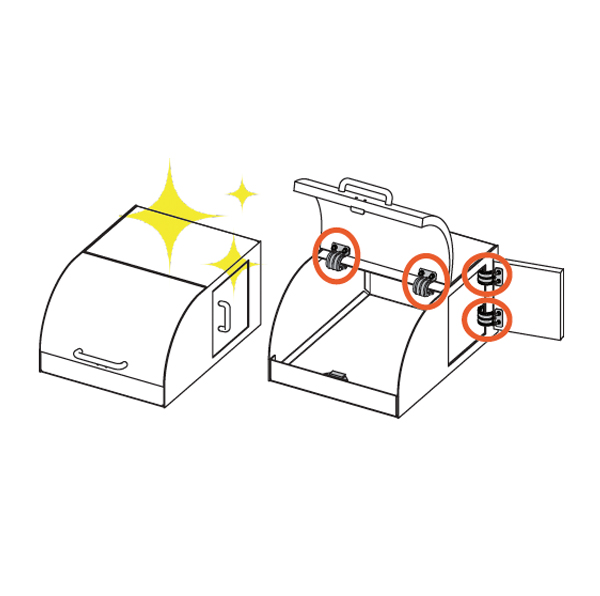 Concealed Type
Same as the standard type, these hinges have a concealed design that is less obtrusive, which contributes to a tidier look.
Concealed Type
Same as the standard type, these hinges have a concealed design that is less obtrusive, which contributes to a tidier look.
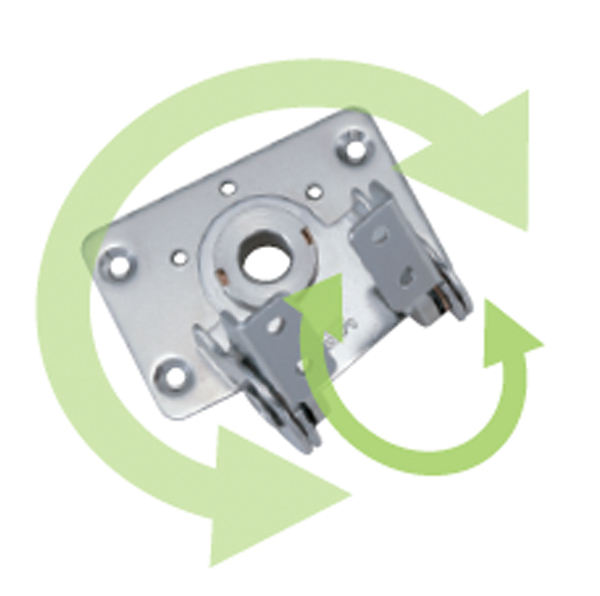
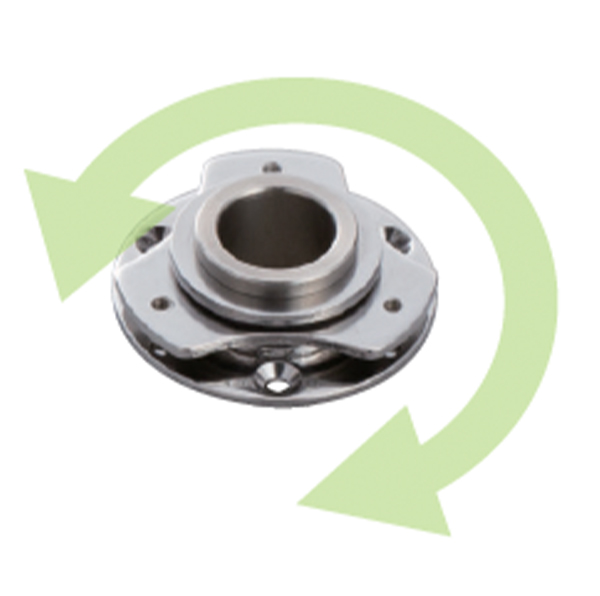 Swivel, Dual Axis Hinges
These hinges often permit a wider range of movement.
Swivel, Dual Axis Hinges
These hinges often permit a wider range of movement.
Specialized features provide added convenience and value. Here’s how hinges work using different design features:
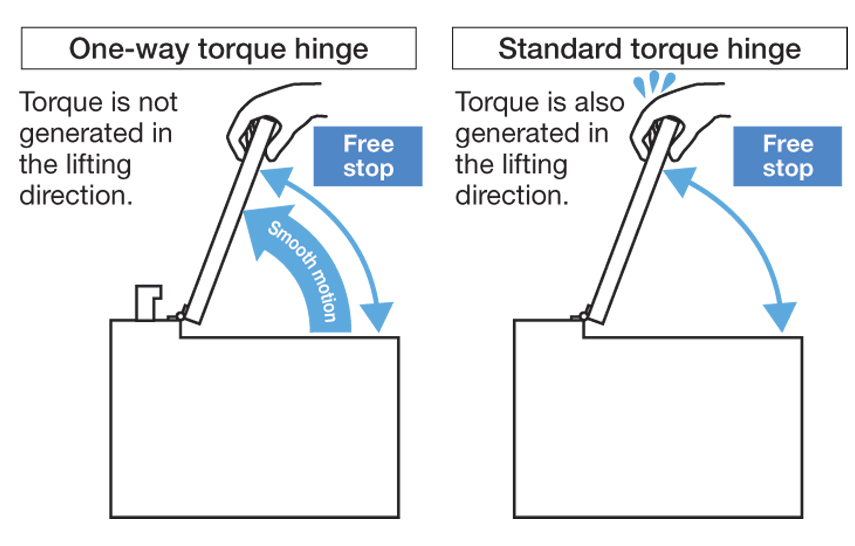 One Way Torque Hinge
Friction is applied in only one direction, allowing doors or lids to be opened more easily while still maintaining the position control or “free-stop” once the door is released and friction is applied by gravity in the closing direction.
One Way Torque Hinge
Friction is applied in only one direction, allowing doors or lids to be opened more easily while still maintaining the position control or “free-stop” once the door is released and friction is applied by gravity in the closing direction.
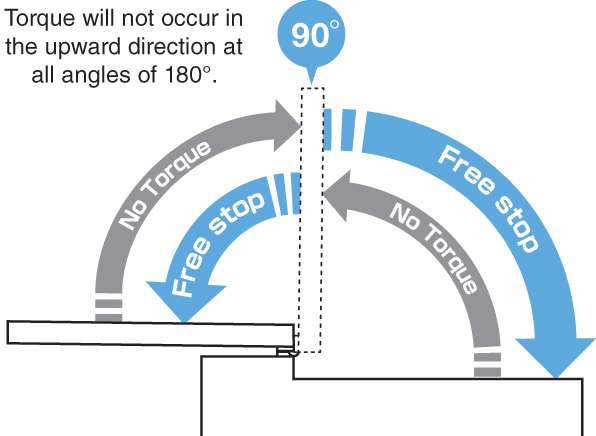 Bi-Directional Torque Hinge
Bi-Directional Torque Hinge
This clever design applies torque in only one direction at a time, but this direction is reversible depending on the hinge position.
Typically, how hinges work with this bi-direction feature is very intuitive: Torque is only generated in the downward direction, thereby preventing a door or panel from slamming shut due to gravity. For a hinge with a 180º range of motion, this means that the torque direction reverses when the hinge crosses 90º.
This design allows the flap to be held in position at all angles from 0º up to 180º.
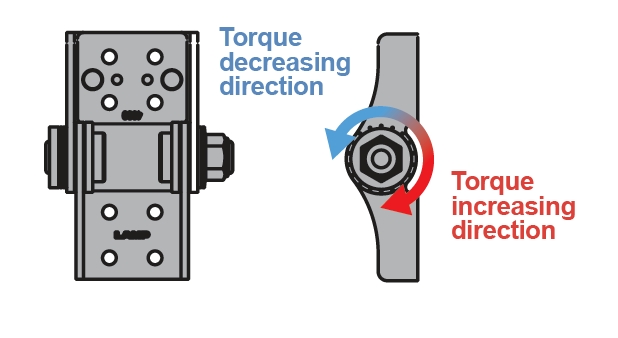 Adjustable Torque Hinge
Adjustable Torque Hinge
With adjustable friction hinges, the amount of friction exerted by the hinge can be adjusted to the desired strength simply with a hex key or similar tool.
This can be helpful when replacing a door with one of a different weight so that you still get the same performance. It’s also handy if a worker prefers a door to move more easily or more stiffly, since the issue of how hinges work can change depending on the people using them. Having adjustable friction hinges can have other advantages as well, such as when it comes to irregular door shapes and uneven door weights on different hinges.
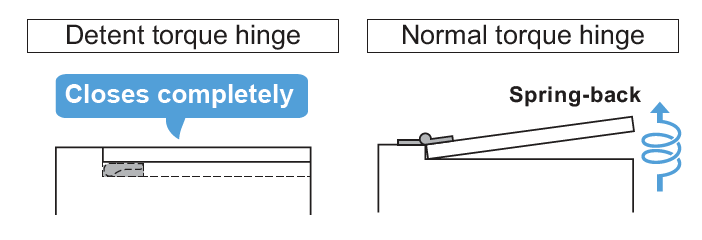 Detent Torque Hinge
A mechanical detent is designed at the closing point to eliminate spring back ensuring that the lid remains completely closed.
Detent Torque Hinge
A mechanical detent is designed at the closing point to eliminate spring back ensuring that the lid remains completely closed.
Lastly in our guide to how hinges work with torque, let’s look at the concept of torque itself and some helpful calculations that you may find useful for your project.
Torque is the force required to rotate something along an axis. It can be calculated by measuring the distance of the door or lid from the hinge side to the opposing edge and multiplying that by the weight of the door or lid. Then take the resulting value and divide it by 2.

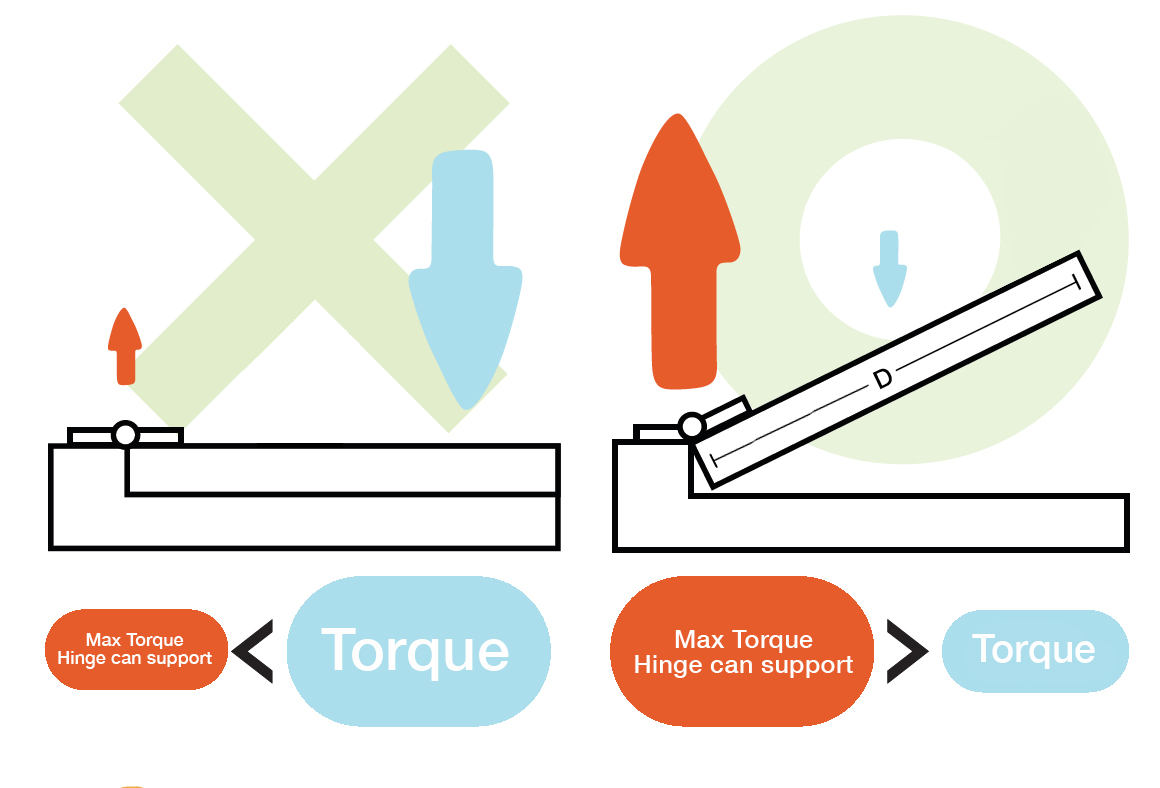
This diagram is simplified for flat-shaped lids or doors, but when thinking about how hinges work this idea is very important: The hinge’s own resistive torque must be greater than the torque exerted on the hinge by the door or panel.
And remember: When using adjustable friction hinges, make sure that you either calculate based on the hinges’ minimum setting or take care to account for any marginal cases.
The unit for the torque moment with hardware in metric is ‘kgf·cm’ or , ‘N·m’(SI unit).
1kgf = 9.80665 N
9.80665 is the Standard acceleration of gravity.
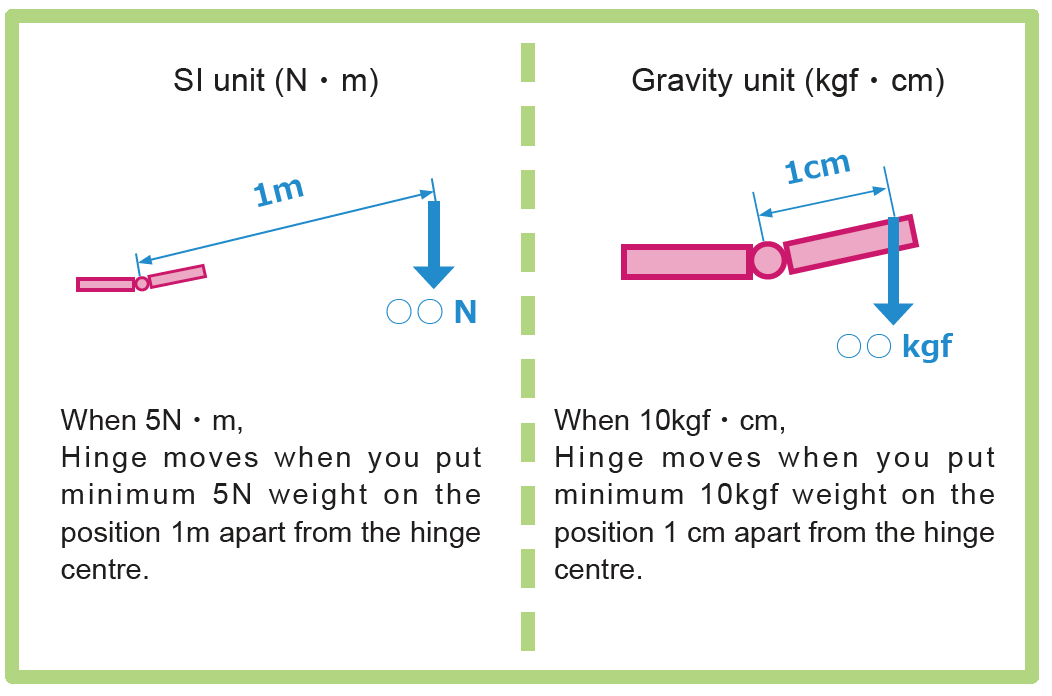
These are different units of torque but convey the same idea. Make sure not to mix up your units.
Here are two tips to select the torque hinge that will work best for your project: 1) Determine the maximum torque that the door or flap will generate 2) Know what the maximum torque the hinge(s) can support
Keep in mind, the max torque for the door or flap must be lower than the maximum torque that the hinges can manage
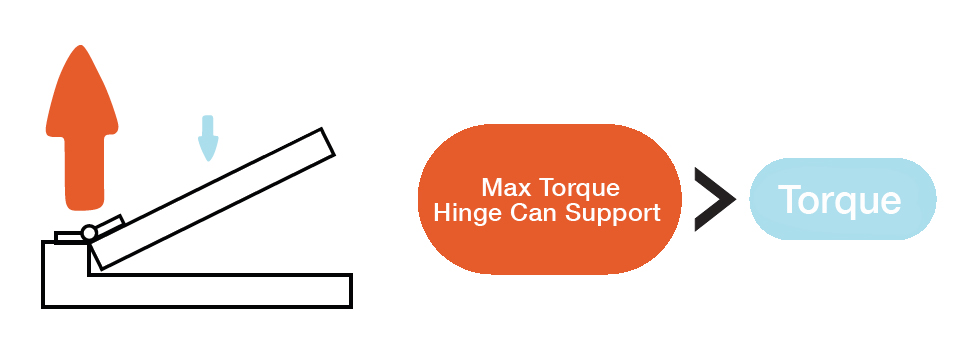
You also have to consider torque tolerance and margins.
If torque tolerance is 20%, the minimum door moment has to be: 1. lower than ‘torque -20% ’. 2. higher than ‘torque +20%’.
As for margins, it’s not a good idea to run your torque loads right up to the hinge’s maximum rating; that’s not how hinges work well. You can get close, but we recommend being pragmatic about the possibility of things like accidental excessive forceful pushing by users.
The torque generated by the door can be calculated from (center of gravity) and (weight) of the door.
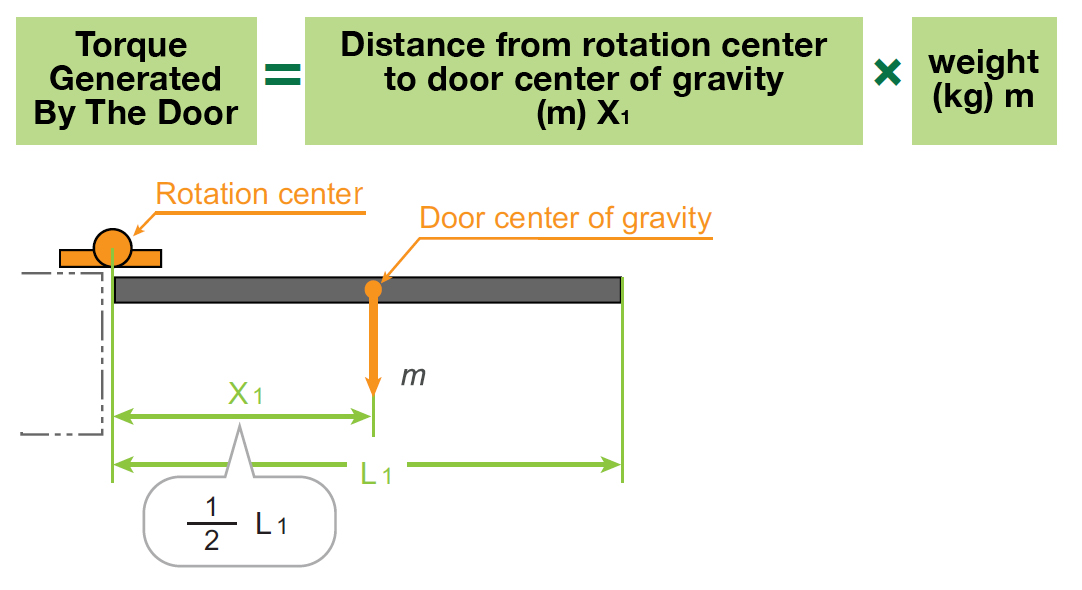
Example: When installing two torque hinges as in the below picture. Thinking about how hinges work, which one is the most suitable? (Torque tolerance: 20%)
● Torque hinge A (0.4 N·m / pc.)
● Torque hinge B (1.0 N·m / pc.)
● Torque hinge C (4.5 N·m / pc.)
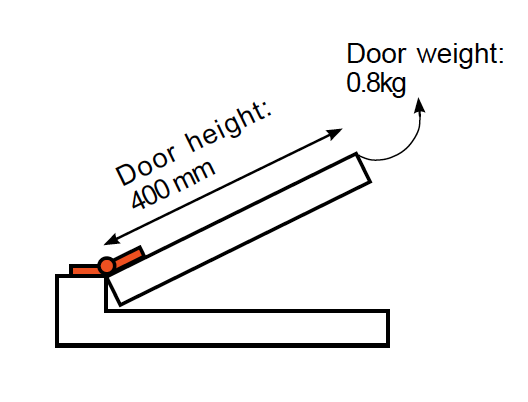
Solution: The most suitable torque hinge is: Torque hinge B (1.0 N·m / pc.)

The torque generated by the door can be calculated as below:
0.2m x 0.8 kgf x 9.80665 ÷ 1.57 N·m÷N
The torque generated per hinge is:
1.57 N·m ÷ 2 ÷ 0.79 N·m
Torque has to be stronger than 0.79 N·m per hinge.
Considering the torque tolerance 20 %, it has to be stronger than 0.95 N·m.
The answer is: Torque hinge B (1.0 N·m / pc.)
Keep in mind when thinking about how hinges work the use case is not always ideal. The formula above assumes that the lid is “flat.” In many cases, lids are “L” shaped or have other attributes which need to be taken into consideration in order to find the actual point of the center of gravity.
To simplify your efforts, we have created a tool that will do the calculations and suggest hinges in our line up that will fit your specific application.
The Sasuga-kun tool was designed to help calculate the torque generated by your door, flap or monitor and suggest suitable Motion Design Tec® products that could work with your application. All you need to do is input values such as weight and dimensions, select a few options and conveniently find the right hardware.
Visit Sasuga-kun by clicking the link below and select the “Industrial Experience”:
We hope this quite to how hinges work with position control has been helpful. Be sure to explore our full selection of torque hinges (friction hinges), including our adjustable friction hinges.
We also invite you to browse our online resources, including product catalogs, videos, and CAD files.
Contact us with any questions or if you need assistance finding a torque hinge or any other product, and we will be happy to assist you.
CAD files are available on each product’s detail page. Click the “CAD/BIM Files” tab, located in the middle of the page to download the different formats. If CAD files are not available for a specific component, please contact our Support Team
Toll Free: (800) 562-5267 (U.S.A. only)